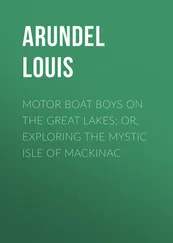James Curwood - The Great Lakes.The Vessels That Plough Them
Здесь есть возможность читать онлайн «James Curwood - The Great Lakes.The Vessels That Plough Them» — ознакомительный отрывок электронной книги совершенно бесплатно, а после прочтения отрывка купить полную версию. В некоторых случаях можно слушать аудио, скачать через торрент в формате fb2 и присутствует краткое содержание. Жанр: foreign_language, foreign_prose, на английском языке. Описание произведения, (предисловие) а так же отзывы посетителей доступны на портале библиотеки ЛибКат.
- Название:The Great Lakes.The Vessels That Plough Them
- Автор:
- Жанр:
- Год:неизвестен
- ISBN:нет данных
- Рейтинг книги:4 / 5. Голосов: 1
-
Избранное:Добавить в избранное
- Отзывы:
-
Ваша оценка:
- 80
- 1
- 2
- 3
- 4
- 5
The Great Lakes.The Vessels That Plough Them: краткое содержание, описание и аннотация
Предлагаем к чтению аннотацию, описание, краткое содержание или предисловие (зависит от того, что написал сам автор книги «The Great Lakes.The Vessels That Plough Them»). Если вы не нашли необходимую информацию о книге — напишите в комментариях, мы постараемся отыскать её.
The Great Lakes.The Vessels That Plough Them — читать онлайн ознакомительный отрывок
Ниже представлен текст книги, разбитый по страницам. Система сохранения места последней прочитанной страницы, позволяет с удобством читать онлайн бесплатно книгу «The Great Lakes.The Vessels That Plough Them», без необходимости каждый раз заново искать на чём Вы остановились. Поставьте закладку, и сможете в любой момент перейти на страницу, на которой закончили чтение.
Интервал:
Закладка:
“But will not this tremendous activity exhaust your mines?” I asked of several of these iron barons. “The ore doesn’t go down to China, and it doesn’t extend all over the State. What is the future?”
The future! Few have thought of this. There are just at present too many millions of dollars in the making to give one time or inclination to picture the days when only black and silent scars will remain to give evidence of the time when this Northland was one of the treasure houses of the earth. But that time must come. Old mining men say so if you can get them to talk about it, and scientific computations, as far as they go, are proof of it. These computations differ, but they agree pretty generally that there are still between a billion and a half and two billion tons of ore in the Superior district. Within the next five years the ships will be bringing down fifty million tons a year, and there is no reason for believing that this will be the maximum. So it is obvious that the ore of the Lake Superior regions will not last beyond the year 1950 unless new deposits are discovered, or methods are found for the utilisation of immense deposits that cannot now be used.
“Will this event not prove ruinous to a large extent to shipping interests?” I asked G. Ashley Tomlinson, of Duluth, and others closely associated with iron and vessel interests. “To-day nearly half of the total tonnage of the Lakes is from the mines. If this industry becomes practically extinct what will become of the hundreds of ships engaged in the traffic?”
Mr. Tomlinson’s answer struck me as extremely logical. “The production of ore will probably reach its maximum within the next ten years,” he said. “It will then begin to decline. But the decrease will be gradual, and meanwhile other freight traffic on the Lakes will be increasing so rapidly that each year ships that were intended originally for the ore trade will carry other business. There will be no loss for the ships. The development of our own and the Canadian West has only begun, and the Lakes are the great links of commerce between their vast enterprises of the future and the East. The grain trade of the Canadian West alone will in the not distant future be something tremendous.”
But whatever the future of the ore regions of the North may be, their present is one of great interest and importance to the world at large. Mining, like shipbuilding, has been reduced to a science on the Lakes. A stranger visiting for the first time any one of the five ranges is filled with astonishment. I will never forget the sensations with which I first saw mining on the Mesaba range. We had come up over a forest-clad hill and stood on the very edge of the mine before I had been made aware of its nearness. Below me there stretched a mile of deep, huge scars in the bottom of what seemed to be a great hole dug into the earth. One of these pits, half a mile in diameter, and, as I afterward discovered, nearly two hundred feet in depth, was almost at my feet.
“That’s iron ore,” said my companion. “And right there it goes one hundred feet deeper down.”
This was one of the great “open pits” of the Mesaba range. There are many others like it in the Superior regions. They are the most wonderful mines in the world. Imagine that you take a barrel of salt, dig a hole, pour the salt into this hole, and cover it with a few inches of earth. This gives you an idea of one of these ore mines. After the earth has been “stripped” from the top the ore is reached and it is found in much the same way that the salt would be found. In the words of one superintendent, it is “all together.” It is as if Nature, like a pirate, had dug holes here and there in which she had hidden her treasure, covering it over for concealment with a few feet of earth.
Down into these pits and along their edges run the tracks of the ore cars. There is here but little of the shovelling and “picking” of men. Steam shovels, weighing from sixty to seventy-five tons each, do the work. Like a great hand one of these shovels dips down into the soft mass of ore, buries its great dipper until it holds from four to eight tons, and then, groaning and rumbling, slowly lifts its burden aloft, swings it over a car, and the actual work of mining is done. A thousand times a day it will repeat this operation, lifting from three thousand to eight thousand tons of ore. This one shovel keeps busy three locomotives and as many trains of dump cars. And there are nearly two hundred of these shovels in use on the Mesaba range alone. It costs only about six cents a ton to mine in this way, after the “stripping” has been done, or, in other words, after the ore has been laid bare. There are two other processes on the ranges where the ore is not so soft or so closely laid. One of these is the milling process, and the other is the blasting out of hard ore. Milling costs about thirty-five cents per ton, and the blasting process from one dollar to one dollar and twenty-five cents.
Why it has for some time been impossible to build ships too fast for the demand may most graphically be shown, perhaps, by quoting a few figures which demonstrate the tremendous energy now being exerted in the ore regions of the North. Figures as a usual thing are uninteresting, but these enter so vitally into the welfare of every American citizen that they should be regarded with more than ordinary respect. As stated before, we are now making nearly half of all the iron and steel produced on earth. In 1880, we made only 1,240,000 tons of steel; in 1890, this had increased to over 4,000,000; in 1900, to 10,188,000 tons, and in 1905, to 20,023,000 tons. Lake ships and Lake mines had to supply this. And now we come to mine figures which almost stagger belief. In 1904, the Mesaba range, for instance, yielded only a little over 12,000,000 tons. In the following year the production was nearly doubled, the ore carriers bringing down 20,153,699 tons, which in 1906 was increased to almost 24,000,000!
This enormous annual tonnage of the Mesaba range, together with that of the other four ranges of the Superior region, is carried by rail directly from the mines to the great ore docks of Lake ports. The product of the Mesaba and Vermilion ranges, in Minnesota, is shipped from Duluth and Two Harbors; the eight million tons of the Goebic and Marquette ranges, in Michigan, from Escanaba and Marquette; and the five million tons of the Menominee range, in Wisconsin, from Ashland and Superior.
To these six ports of the Northland come the vikings of the Lakes and their immense fleets. Four of these ports are within a radius of seventy-five miles, and the two others, in Michigan, are about one hundred and fifty miles farther east and south. No other area of lake or ocean in the world is as much travelled by shipping as that along which these ore harbours are situated. The people of Duluth have witnessed blockades of vessels such as have never been seen in the greatest ocean ports. Over this part of Superior there is a constant trail of smoke from the funnels of ships. During one month there were 1221 arrivals and clearances from Duluth alone, an average of forty a day.
Behind these great ships, which rest never a day nor an hour for eight months of the year, are the kings of Lake commerce – such men as J. C. Gilchrist, James Davidson, Captain Mitchell, William Livingstone, Harry Coulby, W. C. Richardson, A. B. Wolvin, G. Ashley Tomlinson, and scores of others. To write of these would be to chronicle a history of men who have fought their way to the top through sheer force of the “breed that is in them.”
Take G. Ashley Tomlinson, of Duluth, for instance, whose ships carry a couple of million tons of ore a year. “Not a great record,” as Mr. Tomlinson modestly says, but still enough to supply every man, woman, and child in the United States with a little matter of fifty pounds each twelvemonth! In a novel Tomlinson would make an ideal soldier of fortune; in plain, matter-of-fact life he represents those elements which make the great men of the Lakes. He is forty years old. He has sixteen ships. His income is over one hundred and fifty thousand dollars a year.
Читать дальшеИнтервал:
Закладка:
Похожие книги на «The Great Lakes.The Vessels That Plough Them»
Представляем Вашему вниманию похожие книги на «The Great Lakes.The Vessels That Plough Them» списком для выбора. Мы отобрали схожую по названию и смыслу литературу в надежде предоставить читателям больше вариантов отыскать новые, интересные, ещё непрочитанные произведения.
Обсуждение, отзывы о книге «The Great Lakes.The Vessels That Plough Them» и просто собственные мнения читателей. Оставьте ваши комментарии, напишите, что Вы думаете о произведении, его смысле или главных героях. Укажите что конкретно понравилось, а что нет, и почему Вы так считаете.












